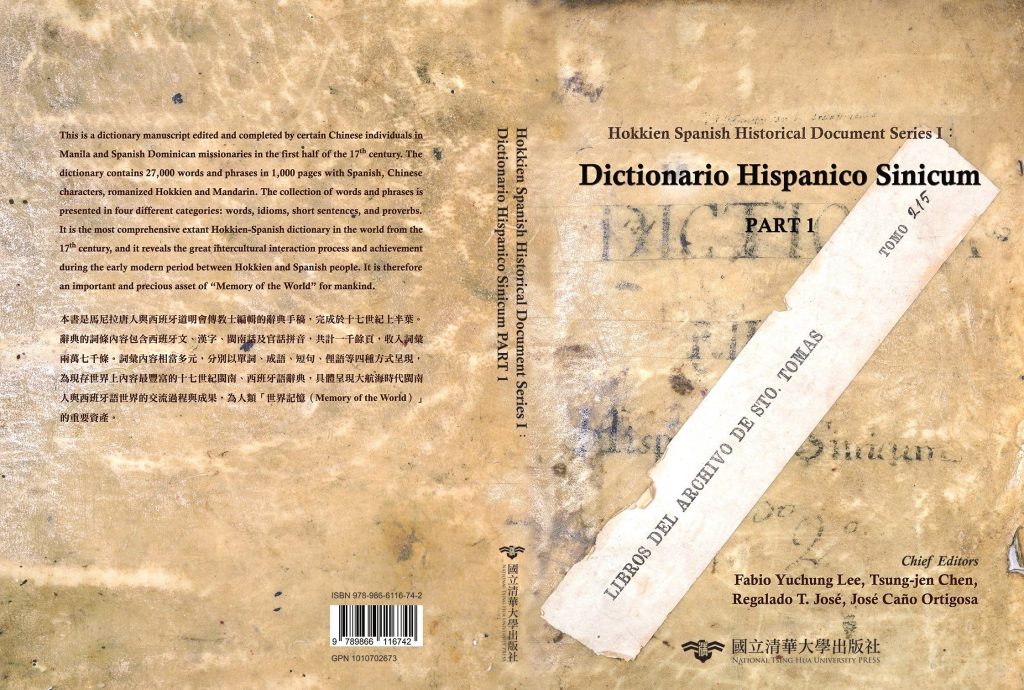
A 400-year-old Spanish-Chinese dictionary was discovered at the archives of the University of Santo Tomas in Manila, Asia’s oldest university, by Spanish and Taiwanese scholars.
Scholars Fabio Yu-Chung Lee and José Luis Caño Ortigosa said they were impressed by the find, which consisted of 1,103 pages containing 27,000 vocabularies.
The “Dictionario Hispanico Sinicum,” described to be the world’s oldest and largest Spanish-Chinese dictionary, was compared by the scholars to the Kangxi Dictionary.
The Kangxi Dictionary was published in 1706 under the order of King Kangxi of the Qing Dynasty and was the standard Chinese dictionary in the 19th century. It has nearly 40,000 entries.
“We were deeply impressed,” said Lee who is from the National Tsing-Hua University in Taiwan.
The scholars said the “Dictionario Hispanico Sinicum” is more “diverse” than the Kangxi Dictionary because it encompasses entries not only in Mandarin and Chinese characters but also translations to Spanish, Hokkien, and Tagalog.
Hokkien is the language widely used in Taiwan and Fujian province in the southeast of China. In the Philippines, many Filipino-Chinese speak “Fookien” or “Philippine Hokkien.”
Published in the 1600s by Spanish Dominican missionaries in Manila, the “Dictionario Hispanico Sinicum” is believed to be older than the Kangxi Dictionary by at least 70 years.
When found, however, the dictionary was labeled “vale muy poco,” or “of little value,” in the university archives.
Henning Klotter of Humboldt University in Berlin, however, said the dictionary should be appreciated by linguists interested in the history of bilingual Chinese-Western lexicography, Hokkien language history, and Hokkien writing traditions.
He said it is the “most comprehensive collection” of Hokkien lexical items of its time and has a “wealth of information on the early history of the Spanish-Chinese encounter in the Philippines.”

Historian Regalado Trota Jose, an archivist at the University of Santo Tomas, said dictionary came from the Spanish colonization of Taiwan in 1626 to 1642.
“We get imperfect glimpses of what the Spaniards, Fujianese, Taiwanese and Tagalogs encountered with each other and among themselves,” said Jose.
He said the dictionary shows how involved the University of Santo Tomas was with the Chinese community in Manila.
The dictionary also revealed the Dominicans’ attempt to evangelize China through Taiwan.
The University of Santo Tomas was established by Dominican friar Miguel de Benavides, the third archbishop of Manila who came to the Philippines with the first Dominican mission in 1587.
Upon his death in July 1605, Benavides bequeathed his library and personal property worth 1,500 pesos to be used as the seed fund for the establishment of an institution of higher learning.
Since its establishment in 1611, the University’s academic life was interrupted only twice: from 1898 to 1899, during the Philippine Revolution against Spain, and from 1942 to 1945, during the Japanese occupation of the country.
Source: Licas Philippines
0 Comments